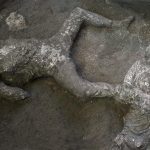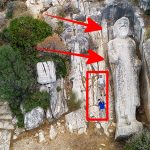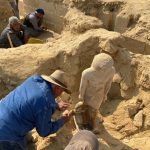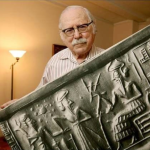The Legendary City of Khara-Khoto: A Gobi Desert Center of Culture and Trade

Nestled in the westernmost reaches of Inner Mongolia, amidst the vast expanse of the Gobi Desert, lies the fabled kingdom of Khara-Khoto—a once-prosperous oasis of culture, commerce, and intrigue. According to Mongolian legend, this city, whose name means “black city,” was founded by the first descendants of the gods—a testament to its mythical origins and enduring legacy.
Khara-Khoto was more than just a city; it was a vibrant center of religious learning, artistic innovation, and bustling trade. Within its walls, sages pondered the mysteries of the universe, merchants haggled over exotic goods from distant lands, brave soldiers stood sentinel against marauding invaders, and skilled craftsmen crafted exquisite works of art that dazzled the eye and stirred the soul.
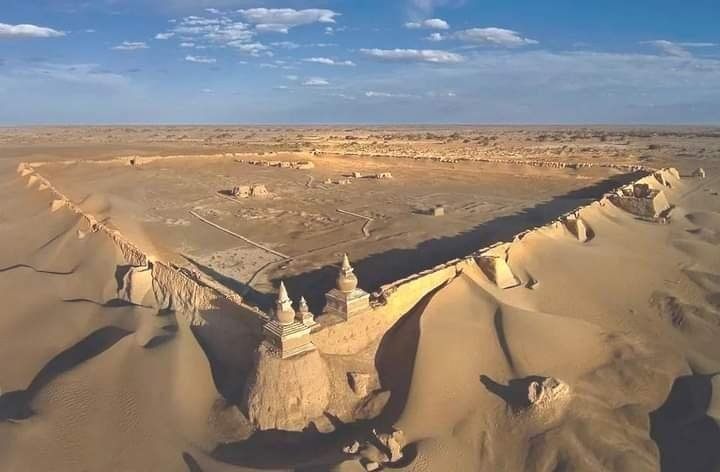
Built in 1032 near the Juyan Lake Basin, Khara-Khoto was a Medieval Tangut fortress strategically located along the legendary Silk Road—a vital artery of trade and cultural exchange that connected East and West. The remains of the city’s 9.1-meter-high ramparts and 3.7-meter-thick outer walls stand as silent sentinels to its former glory, bearing witness to the passage of time and the shifting sands of history.
During the 11th century, Khara-Khoto emerged as a thriving hub of Western Xia trade, attracting merchants from far and wide seeking to capitalize on its strategic location and lucrative markets. The city’s prosperity reached its zenith during this period, as it became a beacon of wealth and opportunity in the desolate expanses of the Gobi Desert.
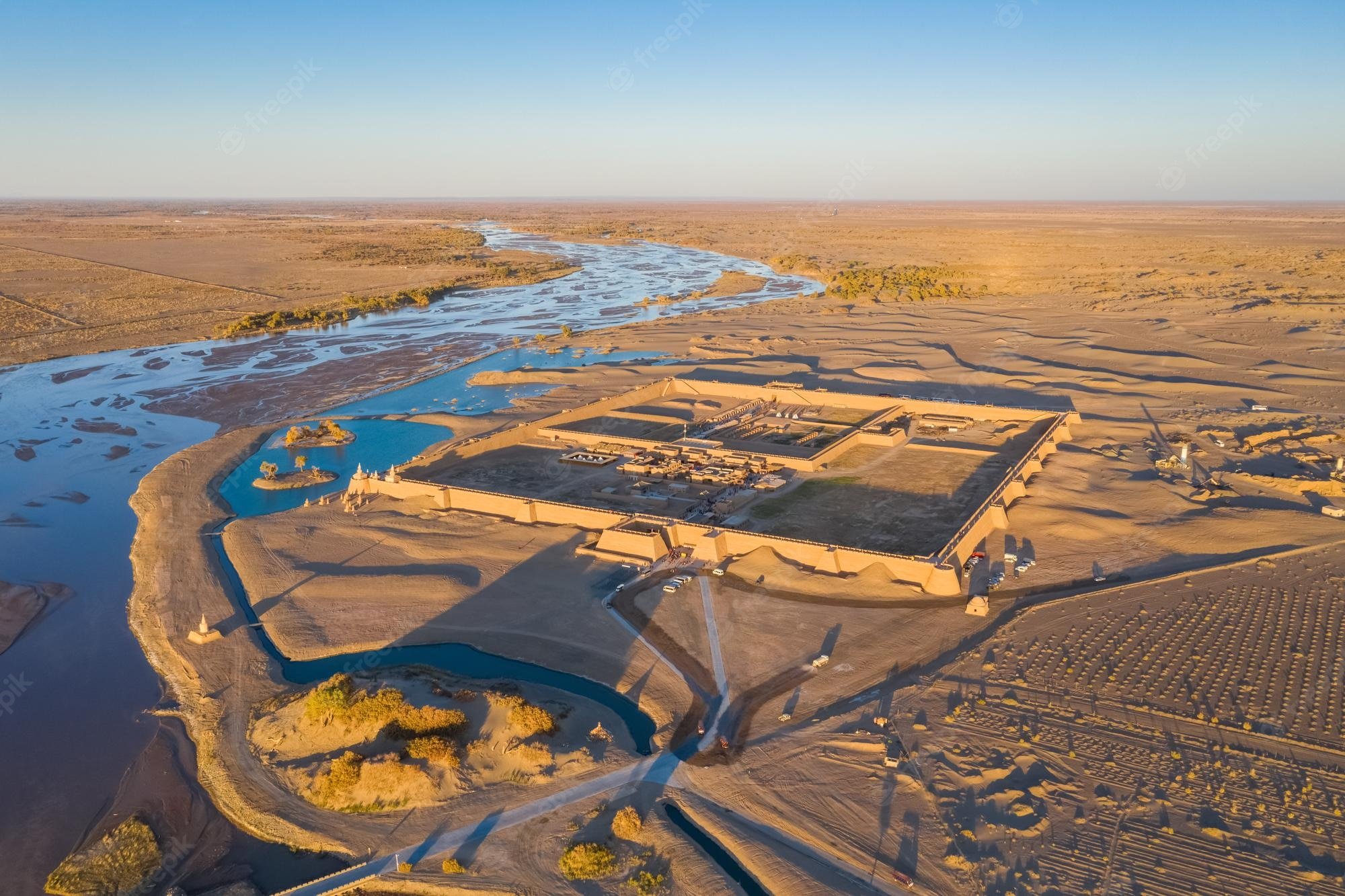
In the annals of exploration, Khara-Khoto is immortalized in the writings of Marco Polo, who described a visit to a city called Etzina or Edzina—a name synonymous with the legendary city of Khara-Khoto. Polo’s accounts provide a tantalizing glimpse into the city’s vibrant streets, bustling bazaars, and opulent palaces, painting a picture of a metropolis teeming with life and activity.
Despite its formidable defenses, Khara-Khoto was not impervious to the tide of history. In 1226, the city fell to the forces of Genghis Khan, marking the beginning of a new chapter in its storied history. Under Mongol rule, Khara-Khoto continued to flourish, its fortunes waxing and waning with the rise and fall of successive dynasties. During the reign of Kublai Khan, the city underwent a period of expansion and renovation, solidifying its status as a key outpost of Mongol power in the region.
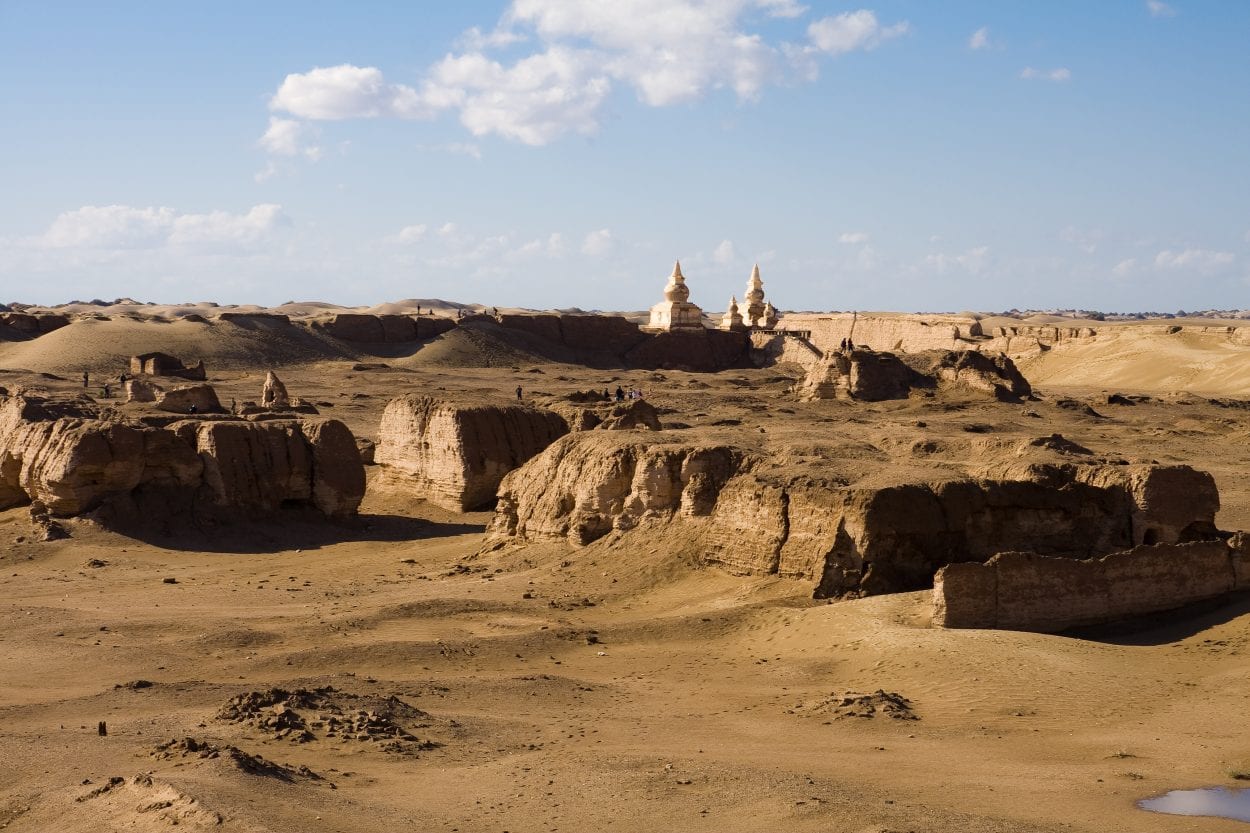
However, by the late 14th century, Khara-Khoto’s glory days were numbered. In 1372, for reasons lost to history, the city was abandoned, its once-thriving streets falling silent as its inhabitants dispersed into the sands of time. Today, the ruins of Khara-Khoto stand as a haunting reminder of a bygone era—a testament to the impermanence of human endeavor and the enduring legacy of those who came before us.
As we gaze upon the crumbling walls and weathered stones of Khara-Khoto, we are reminded of the transient nature of power and wealth, and the timeless allure of the desert sands. Though the winds of time may have swept away its riches and splendors, the memory of Khara-Khoto lives on—a beacon of hope and inspiration in the heart of the Gobi Desert.


